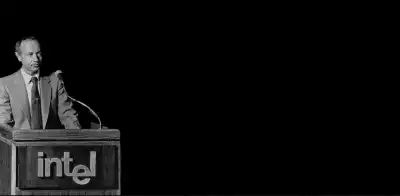This piece is Part One of a two-part series featuring Allbirds.
Part Two: OKRs for Building a Culture of Innovation
Summary
Footwear and apparel brand Allbirds became a household name thanks to their fierce commitment to sustainability. Learn how they rebranded OKRs to better suit their unique culture and how they use them to ensure each employee’s work is directly tied to the company’s top-tier mission.
A company’s mission statement can drive the organization to achieve great things — or it can just ring hollow. What separates the two outcomes?
In the crowded, hyper-competitive footwear market, San Francisco-based Allbirds rose up out of nowhere with a unique mission to build comfort and good design into the most sustainable footwear on the planet. In just two years after launching in 2016, Allbirds sold over a million pairs of shoes made from natural materials such as Merino wool for its sneakers and sugar cane for its flip flops — along the way achieving a billion-dollar-plus valuation.
Many organizations have mission statements filled with aspirations and platitudes. The knock against such credos is that they are empty words on a website or in a company handbook, and that both senior leaders and rank-and-file employees aren’t necessarily connected to the mission on a day-to-day basis. Instead, they are executing the business any way they can, aiming to make the quarterly numbers.
At Allbirds, however, co-founder and chief operating officer Joey Zwillinger says in an interview that “financial success is directly correlated with the impact towards our mission.” He explains that setting Objectives and Key Results (OKRs) for all 250 employees enables a tight link between mission and financial gain. “Keeping a super clear mission allows our strategies to be consistent and allows our OKRs to connect to them,” he says.
Measuring sustainability
While Allbirds decided from the start to source natural products, only later did it develop the Objective for each pair of shoes to have a carbon-neutral footprint (pun intended). That involves training all employees to track the carbon emissions at every step in the value chain, including the transporting of materials and finished products. At the end of the process, it involves purchasing carbon offsets to make up for amounts that get each pair of shoes down to zero.
Essentially, that means Allbirds has equations that enact its mission statement. “Once we understood exactly down to the gram of carbon dioxide equivalent emissions we made,” Zwillinger says, “we could then offset each of those, so now we have a carbon neutral promise to customers that any time you buy anything from us, it is 100% carbon emission neutral on the planet.”
That puts the onus on leaders and employees to find creative ways to lower those offsets, he adds, “so that every year, we have a lower and lower carbon emissions per pair, so that we have to offset less and less, and we connect that through OKRs into financial success as well as impact towards the mission.”

Rebranding OKRs as KIWIs
Inside Allbirds headquarters and at its retail outlets, OKRs go by a different name. Inspired by the New Zealand heritage of CEO Tim Brown, the other co-founder, the company has enacted a system of “keep improving with intent,” or KIWIs.
“We call them KIWIs, but they are OKRs,” says Zwillinger. “We try to make everything a little bit more customized and memorable for people here so that we really drive home the implementation of it. If you can’t remember it, you know, it’s kind of pointless.”
The system of KIWIs doesn’t just guide top goals but goes down to deeper levels of action. For instance, the company has an Objective to perform life cycle assessment (or LCA, also called cradle-to-grave analysis) on everything it does, with a Key Result of reducing environmental impact by 10% annually.
This is a major challenge to implement. “It’s hard, and it still might not be perfect,” he says, “but when we go down to level 2 — L2 we call it — the Objective is to define a plan that puts us on the path to carbon neutrality.”
Cascading the KIWIs with RIPEN
As Allbirds grows, the challenge of implementing its KIWIs for every employee and for every process only grows more and more difficult. That’s why the leadership team came up with another memorable acronym to ease the process of cascading top Objectives through every level of the company.
“We pick the top things that we need to do in the company for the year,” explains Zwillinger, “and we boil those down into no more than five Objectives, and we have a mnemonic device for our KIWIs that we call RIPEN, like for kiwi fruit.”
RIPEN stands for Retail, International, Product, Experience, and Non-Negotiables.
Each of these areas has their own level 2 Objectives. “We have our leadership team get together with each department, and they create the L2s, and we directly link 100% of their L2 Objectives to a Key Result from L1.”
The idea is not to try and do everything at once or to bite off more than you can chew, but for each department to stick to its top three Objectives and Key Results for the year. To help track it all, Allbirds uses a software platform that helps link each individual employee’s Objectives on a quarterly basis to their departmental KIWIs.
Not only are their Key Results tracked, but the memorability of the overall system is tracked too. People have to recall everything — to know what KIWI and RIPEN mean, for instance — in order to assure that people are connected to the wider mission and the strategic imperatives.
Finally, there’s the Breathe List
Yet for all of its power, the Allbirds system of KIWIs and RIPEN doesn’t encompass everything that needs to get done to keep a business running. There are many things employees must do that fall outside the realm of critical Objectives tied to the mission.
“We do want to make sure that we capture those things too,” says Zwillinger, “so we have created something called the Breathe List, like breathing fresh air.” These are the things that the company needs to do just to survive, thus the analogy.
One example is to provide better payment service to key vendors. For instance, reducing average days outstanding in the accounts payable department by 20 percent, or to go from 70 days to 50 days.
“Whereas KIWIs are the things that we need to do to win, to create a long-lasting brand that is remembered for hundreds of years, the Breathe List is kind of like the table stakes.”

It all gets down to focus
Zwillinger keeps a quote by the classic management guru W. Edwards Deming on his phone: “If you can’t describe what you’re doing as a process, you don’t know what you’re doing.”
The idea is that the culture of the company is built by using design thinking to turn everything into a simple, memorable process that can be measured and tracked.
“I think companies that are very successful, if you look at a common theme, I think they tend to be extremely focused, particularly at our stage,” Zwillinger concludes. “If you’re doing 10 things, you’re going to do them worse than if you were doing one thing well.”
As a leader, he sees his job as picking the few things that will fulfill the mission and do them better than anyone else. “What OKRs, and KIWIs in our parlance, have allowed us to do, is to maintain unbelievable focus, and that unbelievable focus has driven execution to a higher degree, and that has driven a clarity of message to the consumer.”
And that message centers around sustainability. “It’s why it was so important to us that the business become a certified B (Benefit) Corporation. “We treat the environment as a critical stakeholder in the success of our business.”
In other words, everything is connected — the internal processes are connected to the brand promise which is connected to the life of the consumer and their impact on the environment. Not many companies can say that, but Allbirds shows how it can be done.
This piece is Part One of a two-part series featuring Allbirds.
Part Two: OKRs for Building a Culture of Innovation
If you’re interested in starting our OKRs 101 course, click here.




